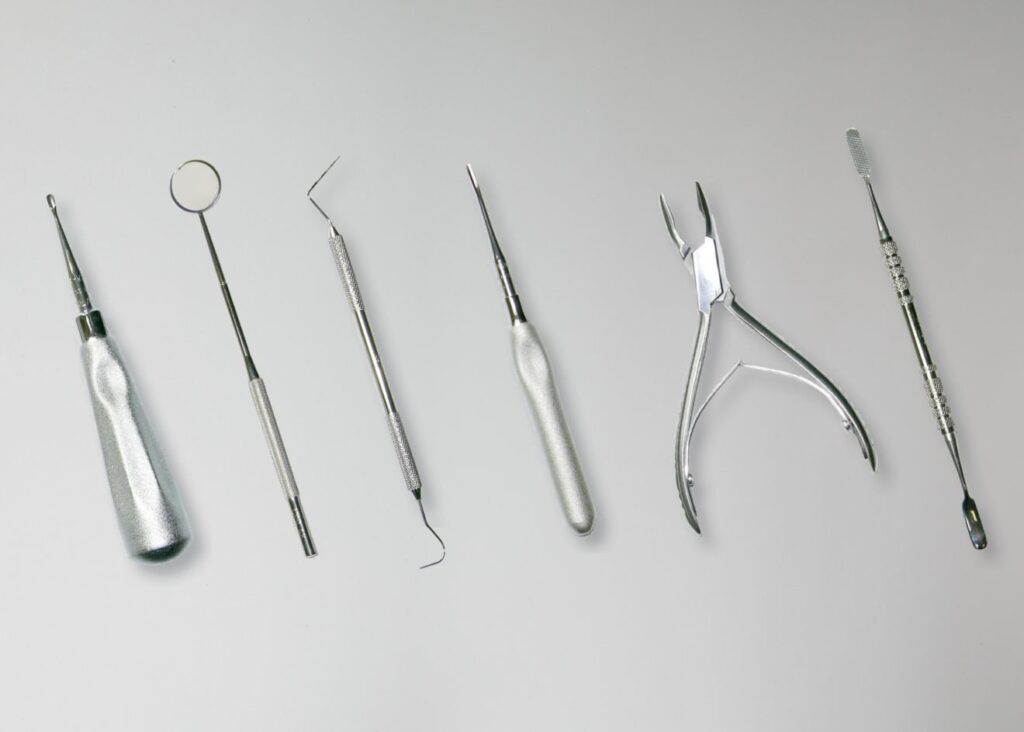When it comes to dental and surgical instruments, the periosteal elevator is indispensable. Whether you’re a seasoned professional or a newcomer to the field, ensuring you have the right periosteal elevator is crucial for successful procedures. This comprehensive checklist will guide you through the essential considerations to make an informed purchase.
1. Understanding the Basics
What is a Periosteal Elevator?
A periosteal elevator is a surgical instrument used to separate the periosteum (the membrane covering the bone) from the bone. It’s primarily used in dental surgeries, including extractions, periodontal surgeries, and implant procedures. Knowing the purpose and function of this tool is the first step in selecting the right one.
2. Material and Quality
Stainless Steel
The most common material for periosteal elevators is stainless steel. It offers durability, resistance to corrosion, and ease of sterilization. Ensure that the stainless steel used is of surgical grade to withstand repeated use and sterilization without degrading.
Titanium
Some periosteal elevators are made from titanium. Titanium is lighter than stainless steel and equally durable. It’s also biocompatible, making it an excellent choice for instruments used in close contact with tissues.
Quality Assurance
Look for instruments that come with a guarantee or certification of quality. Reputable manufacturers will often provide this, ensuring that their products meet high standards for medical tools.
3. Design and Ergonomics
Handle Design
The handle design is crucial for comfort and precision. Look for handles with ergonomic designs that fit comfortably in your hand. A textured or grooved handle can prevent slipping, providing better control during procedures.
Weight and Balance
The weight of the periosteal elevator should be balanced. An instrument that’s too heavy can cause fatigue, while one that’s too light may lack the necessary control. The balance between the handle and the working end should be optimal for ease of use.
Working End
The working end of the periosteal elevator comes in various shapes and sizes. The choice depends on the specific procedures you perform. Common designs include straight, curved, and spoon-shaped ends. Each has its own application, so it’s wise to have a variety on hand.
4. Size and Shape
Blade Width
The width of the blade is an important factor. Narrow blades are suitable for delicate tasks and precise work, while wider blades can be used for more extensive separations. Consider having a range of blade widths to cover different procedures.
Double-Ended vs. Single-Ended
Periosteal elevators can be double-ended or single-ended. Double-ended instruments offer versatility, with different shapes or sizes on each end. Single-ended elevators might be more comfortable to handle for some professionals, as they are typically lighter.
5. Brand and Manufacturer
Reputation
Choose a periosteal elevator from a reputable brand or manufacturer known for producing high-quality surgical instruments. Research customer reviews and professional recommendations to gauge the reliability of the brand.
Warranty and Support
Check if the manufacturer offers a warranty and reliable customer support. This is important for addressing any issues that may arise with the instrument over time.
6. Sterilization Compatibility
Autoclave Compatibility
Ensure that the periosteal elevator is compatible with autoclaving, the most common method of sterilization. Stainless steel and titanium instruments generally withstand autoclaving well.
Ease of Cleaning
Consider how easy it is to clean the instrument. Instruments with intricate designs or difficult-to-reach areas can harbor bacteria if not cleaned properly. Smooth surfaces and simple designs are preferable for ease of cleaning and sterilization.
7. Cost and Budget
Price Range
Periosteal elevators come in a range of prices. While it’s tempting to opt for cheaper options, remember that quality often comes at a cost. Investing in a high-quality periosteal elevator can save money in the long run by reducing the need for frequent replacements.
Bulk Purchase Discounts
If you’re equipping a clinic or a surgical center, inquire about bulk purchase discounts. Many suppliers offer reduced prices for larger orders, which can be a cost-effective way to stock up on essential instruments.
8. User Feedback and Recommendations
Peer Reviews
Consult with colleagues or other professionals in your field for their recommendations. User feedback can provide valuable insights into the performance and durability of different periosteal elevators.
Online Reviews
Look for online reviews from verified purchasers. These can give you an idea of the pros and cons of specific models and brands, helping you make an informed decision.
9. Trial and Testing
In-Hand Testing
If possible, test the periosteal elevator in hand before purchasing. This will give you a feel for the weight, balance, and ergonomics of the instrument. Many suppliers offer sample instruments for this purpose.
Feedback from Staff
If you’re purchasing for a clinic, involve your staff in the decision-making process. Their feedback on the comfort and usability of the instrument can be invaluable.
10. Future-Proofing
Compatibility with Other Instruments
Consider the compatibility of the periosteal elevator with other instruments you use. A well-matched set of tools can enhance efficiency and effectiveness during procedures.
Advancements in Technology
Stay informed about advancements in surgical instrument technology. New materials and designs are continually being developed, and keeping up-to-date can ensure you’re using the best tools available.
Conclusion
Choosing the right periosteal elevator involves careful consideration of several factors, from material and quality to design and ergonomics. By following this comprehensive checklist, you can make an informed decision that ensures you have the best tool for your needs. Investing in a high-quality periosteal elevator will not only enhance the success of your procedures but also improve the overall experience for both you and your patients.
